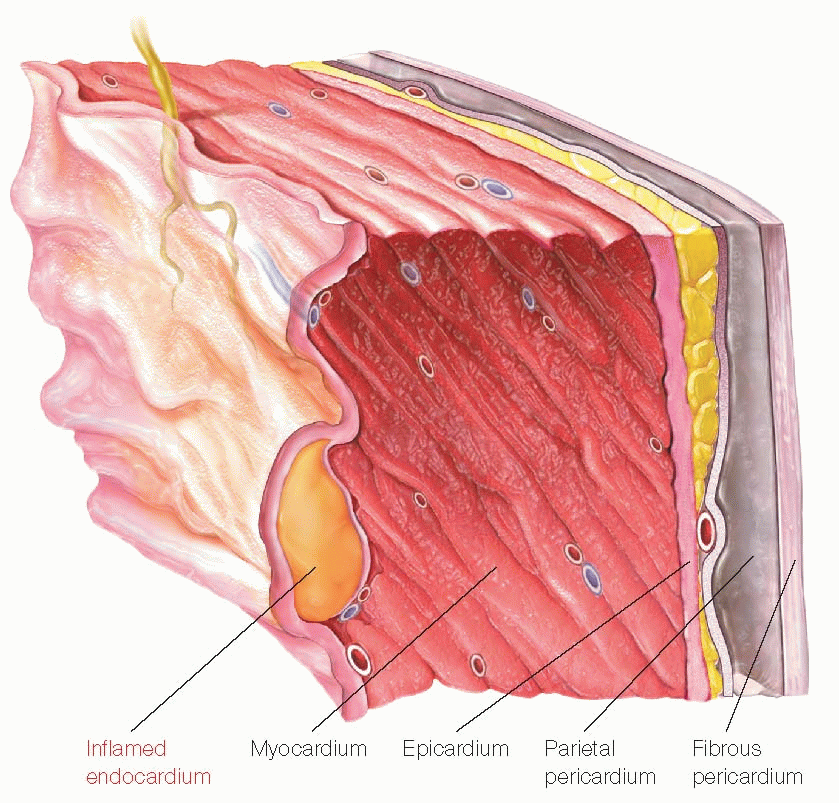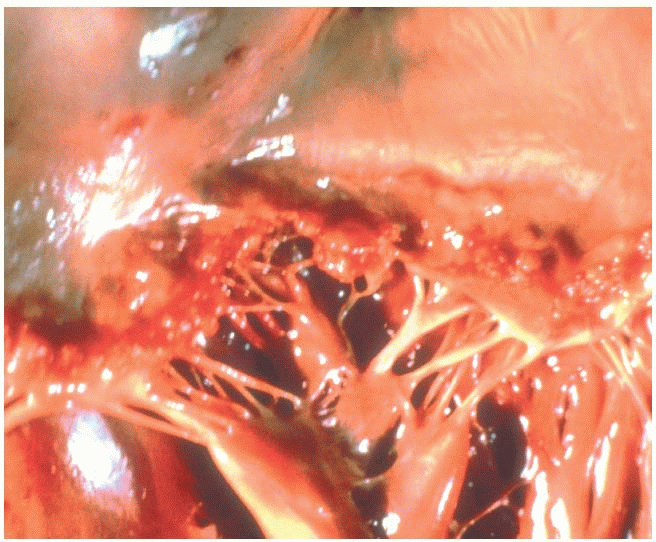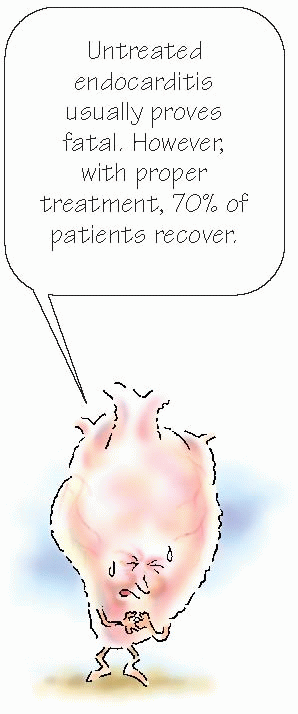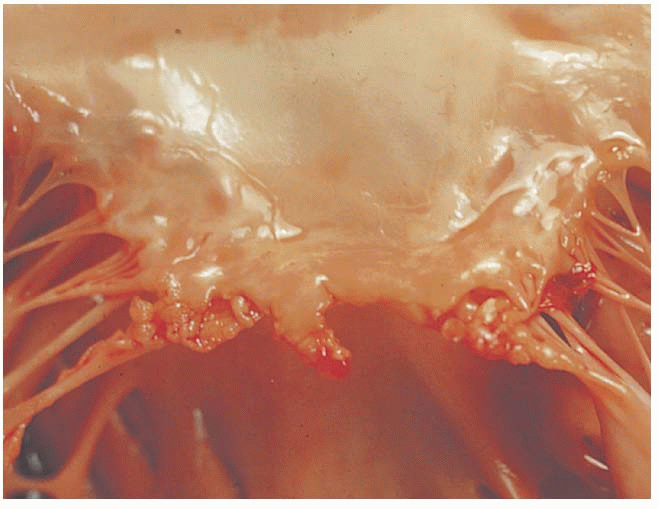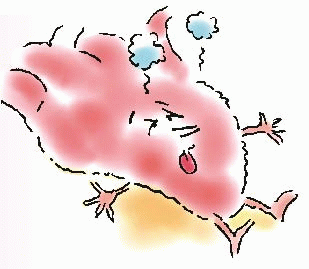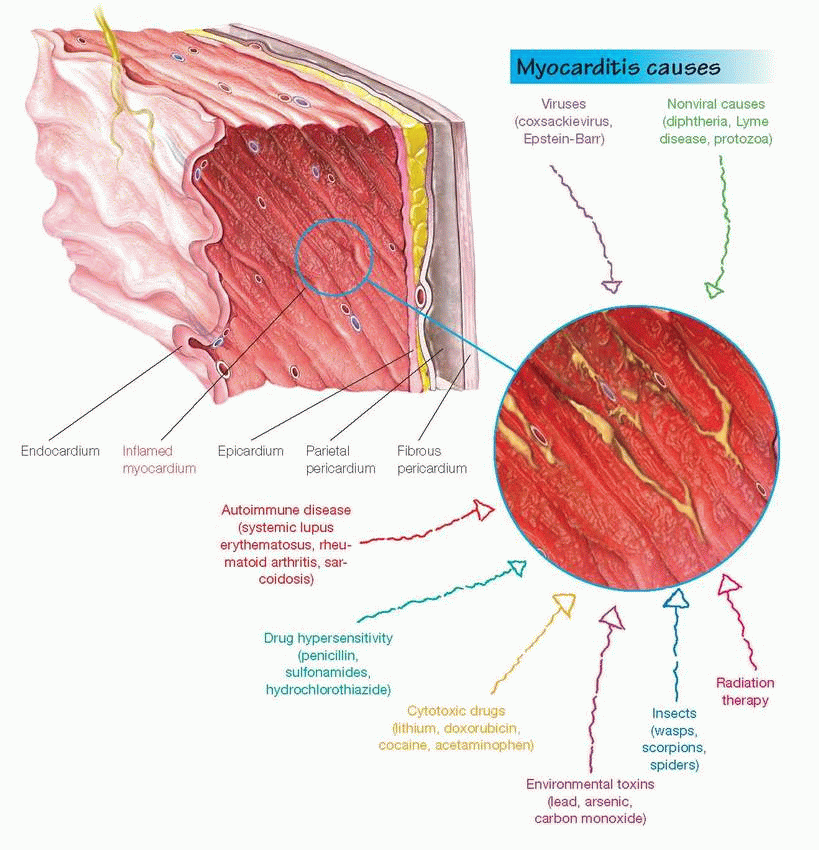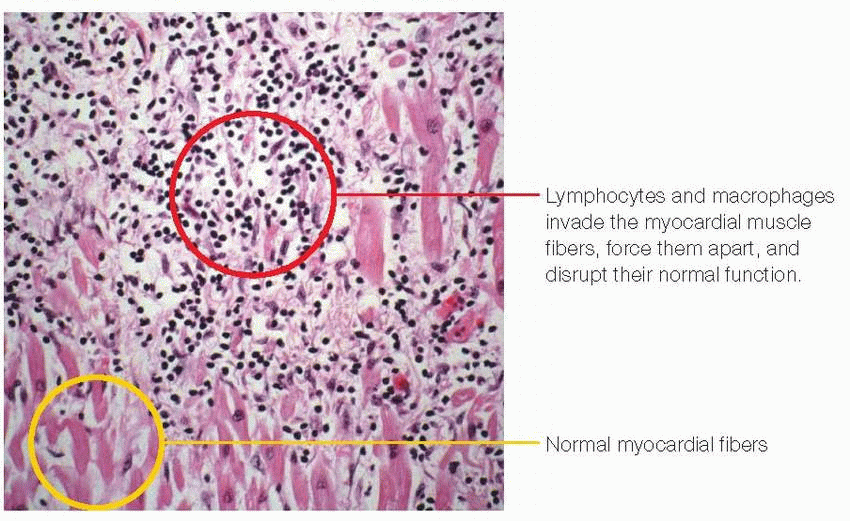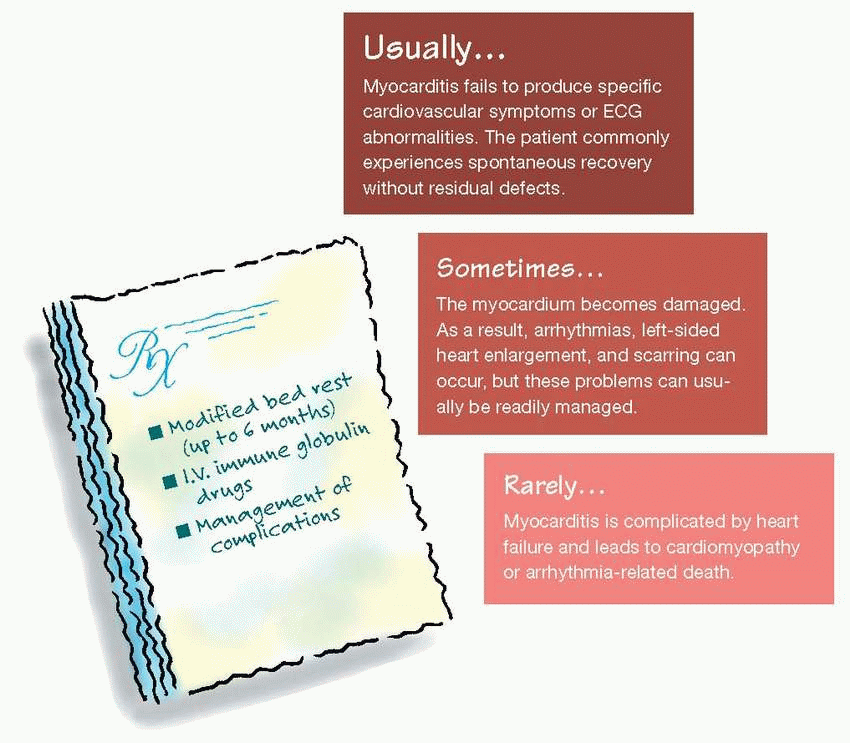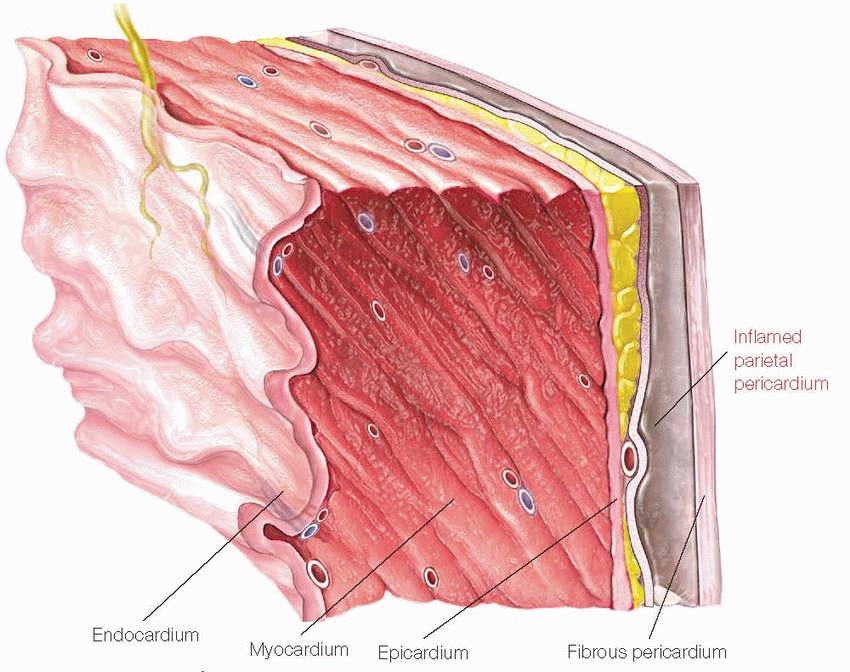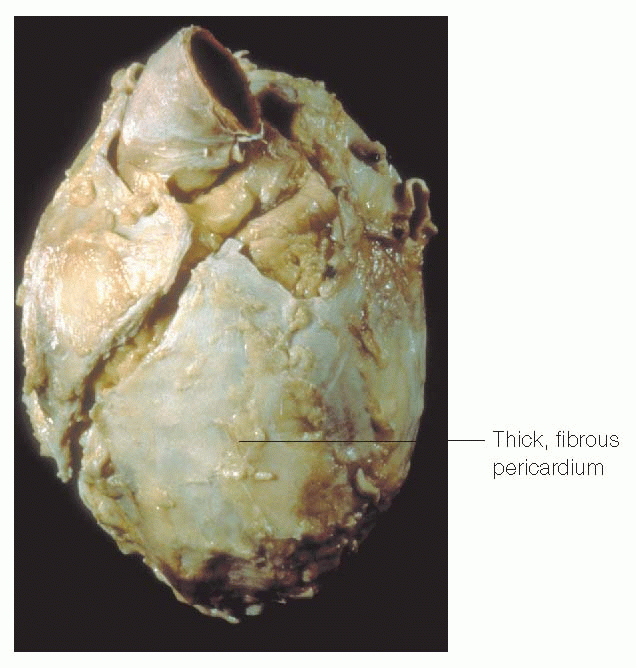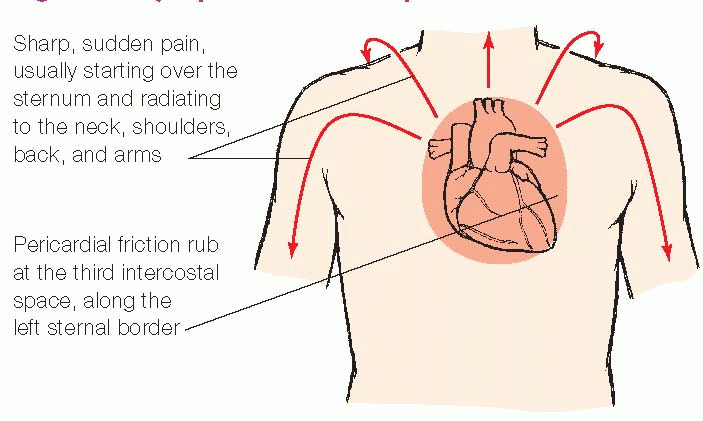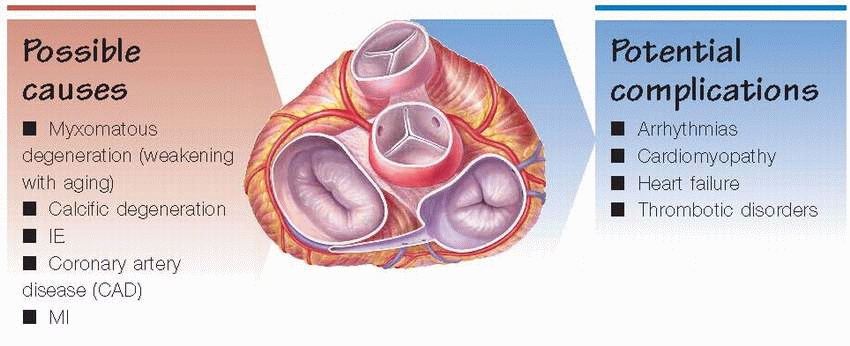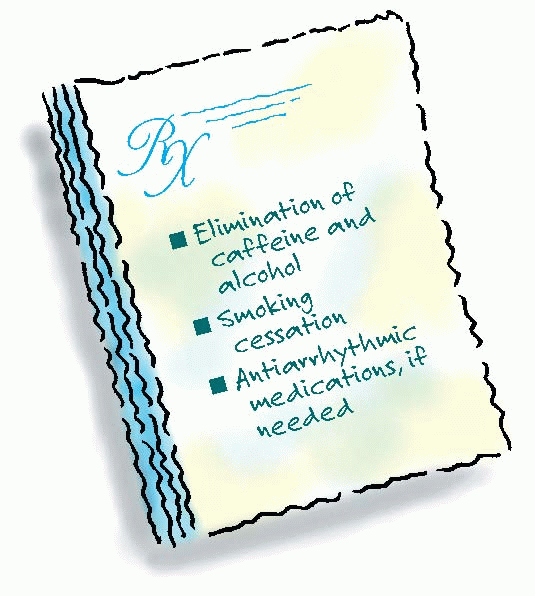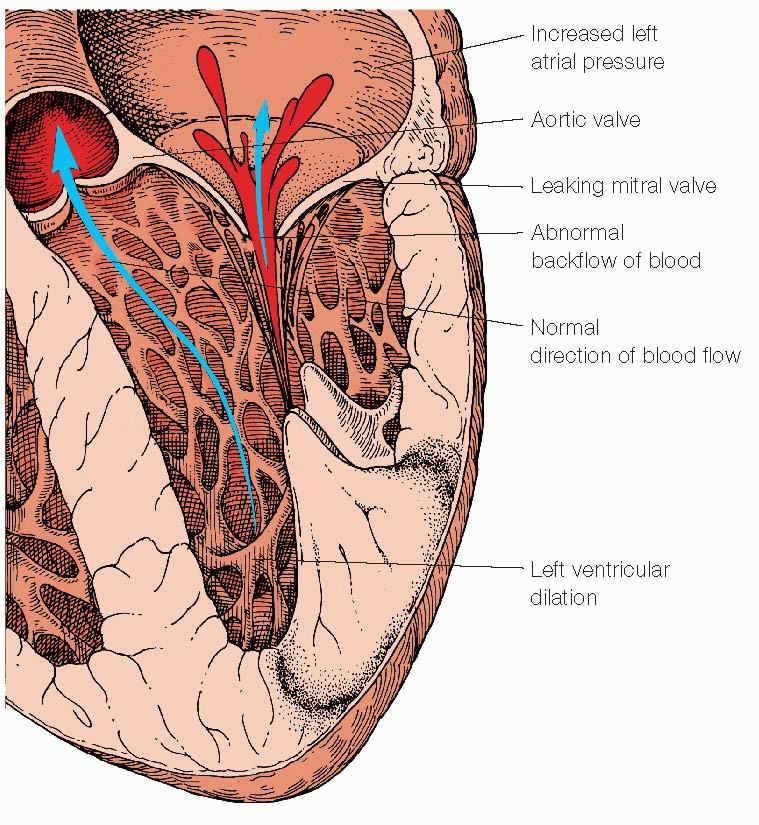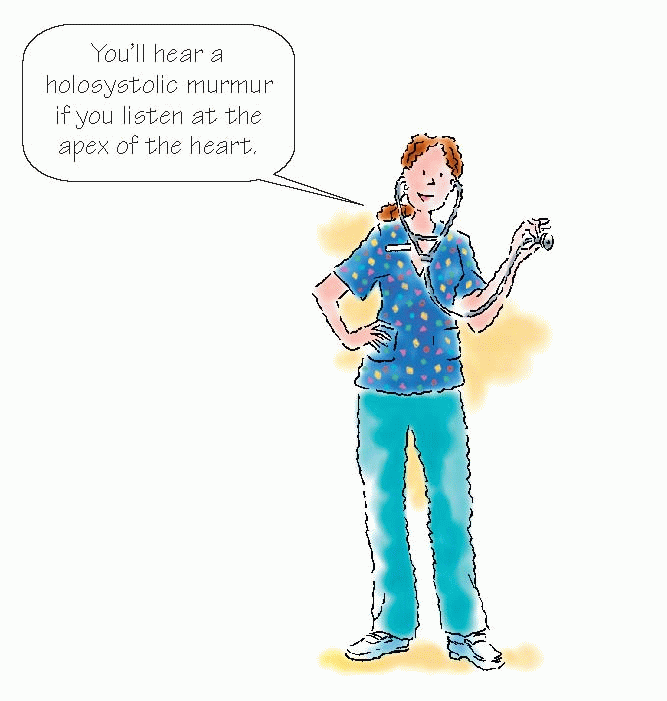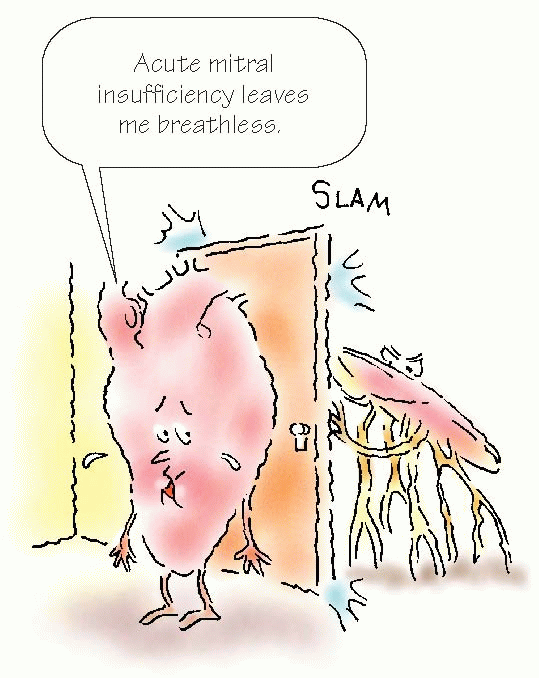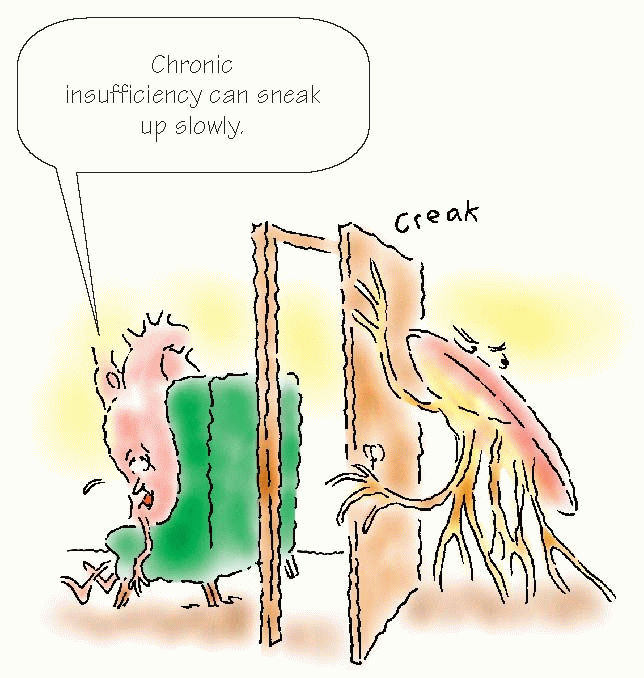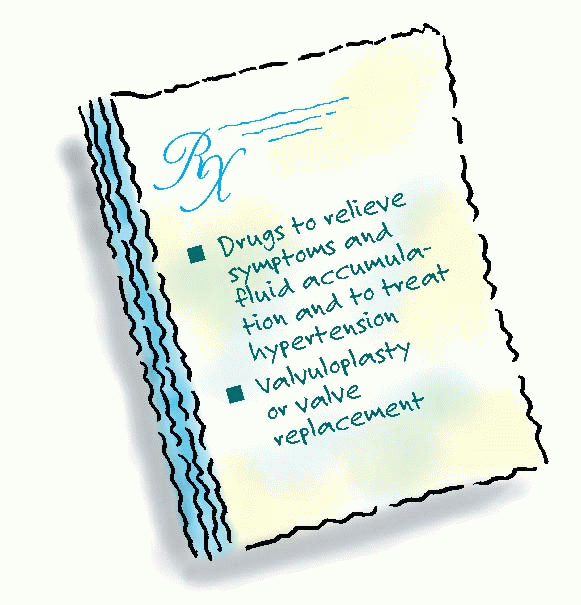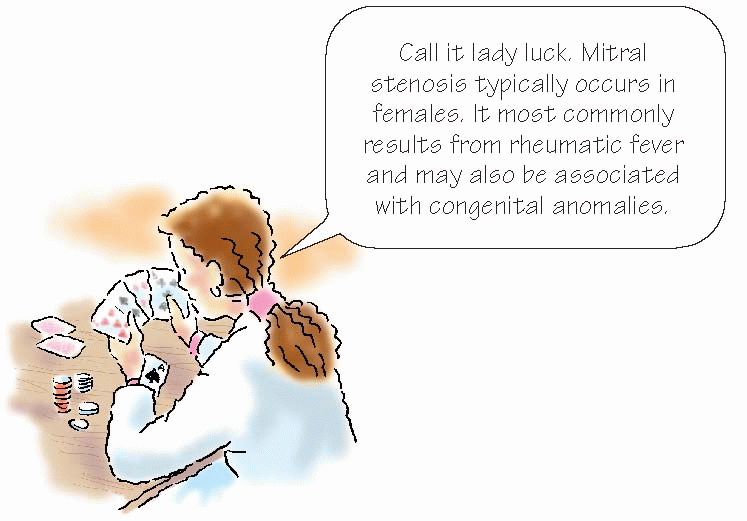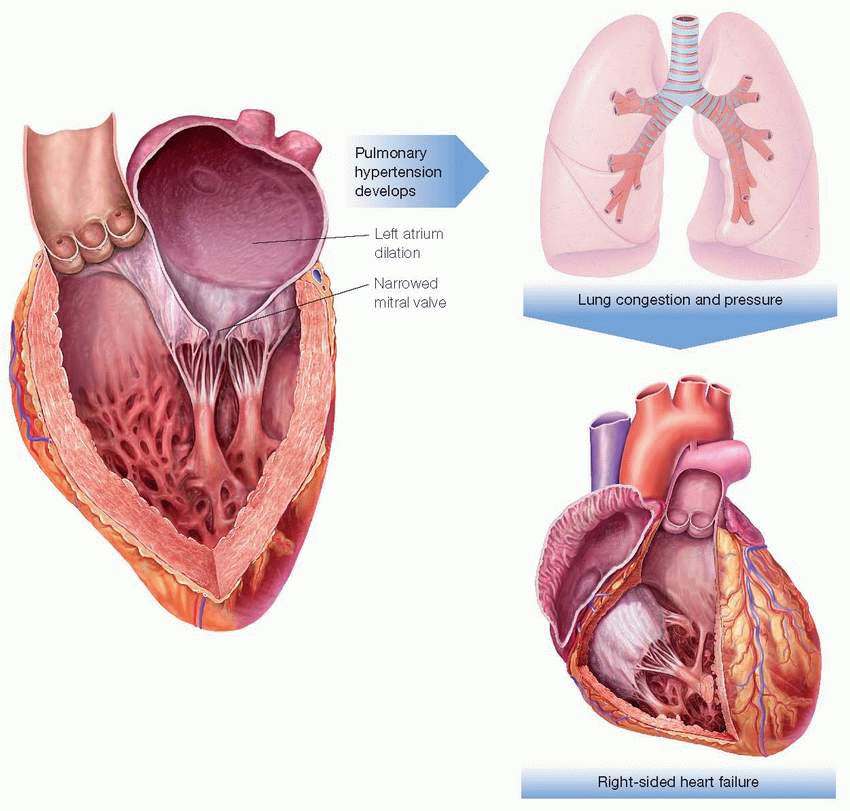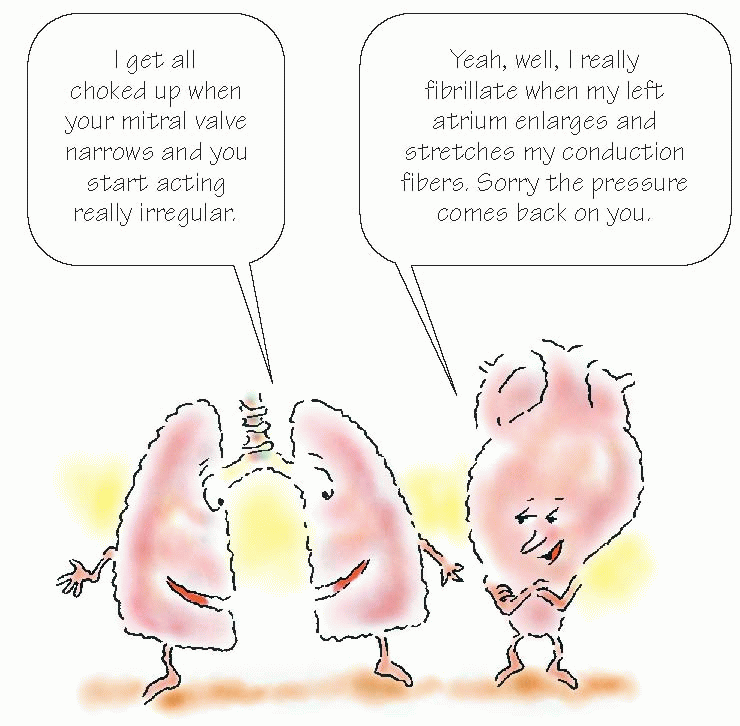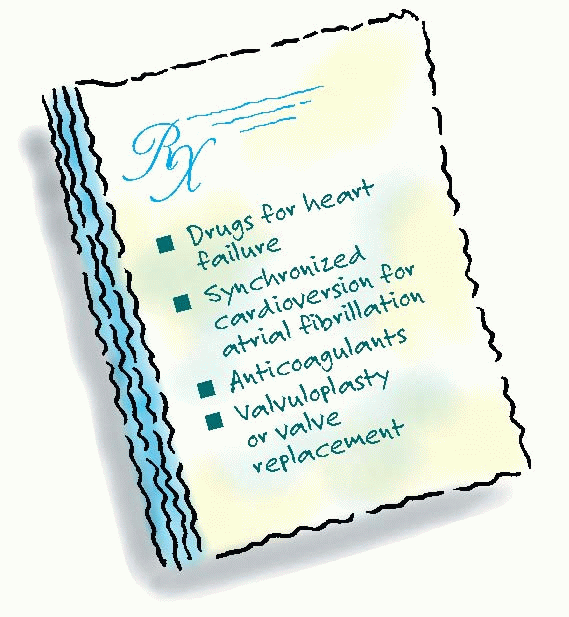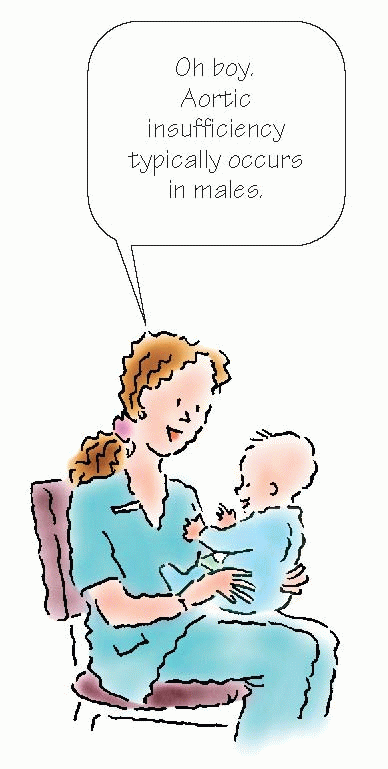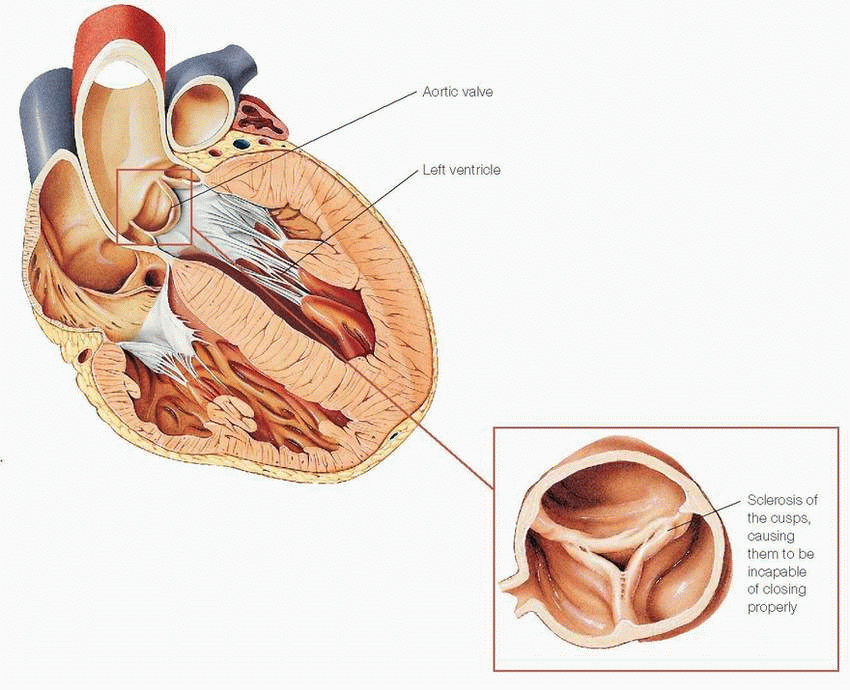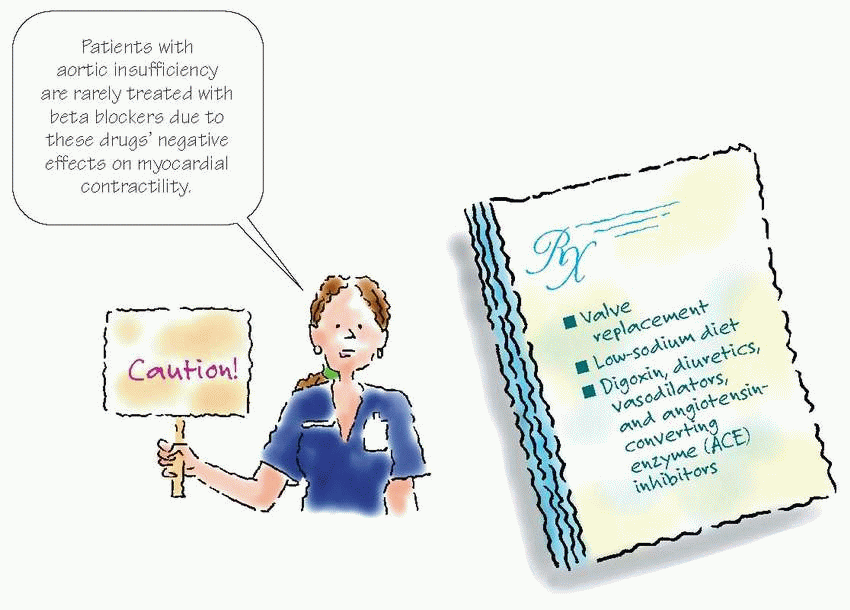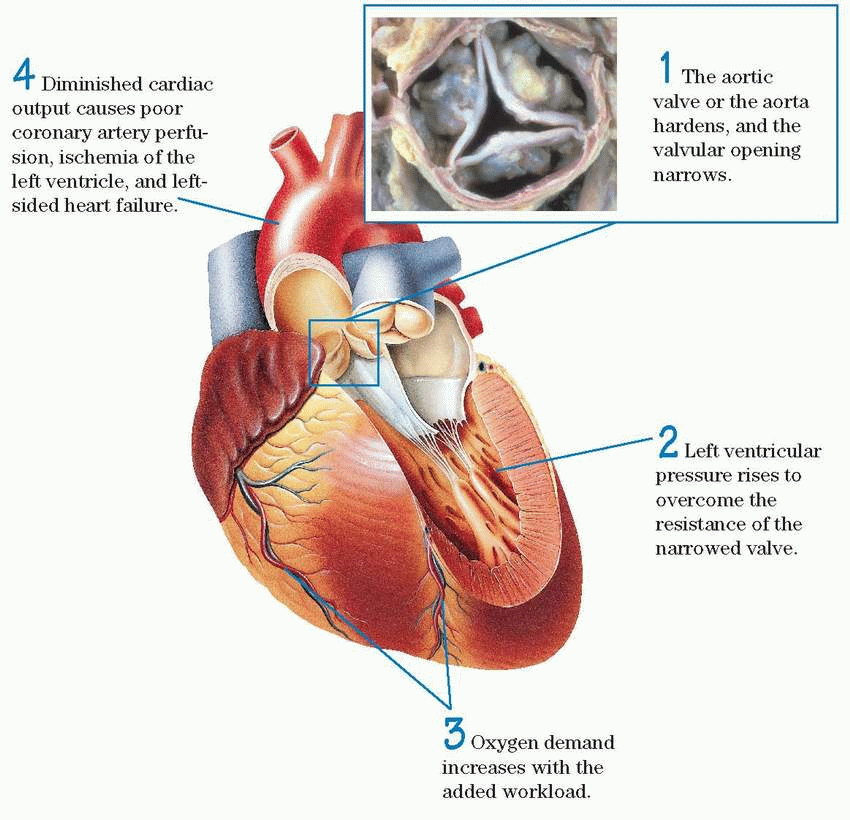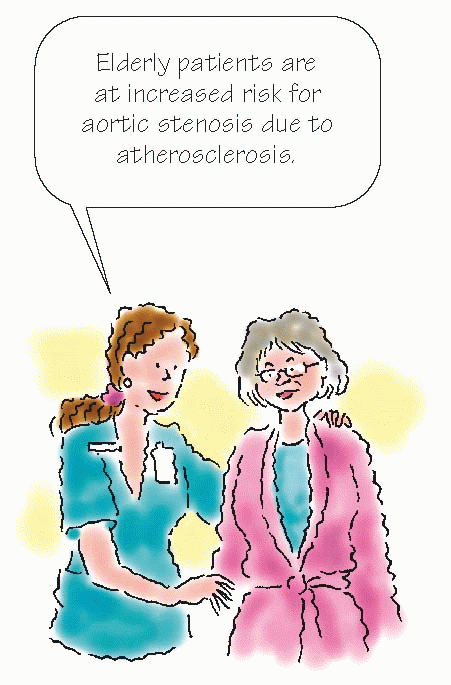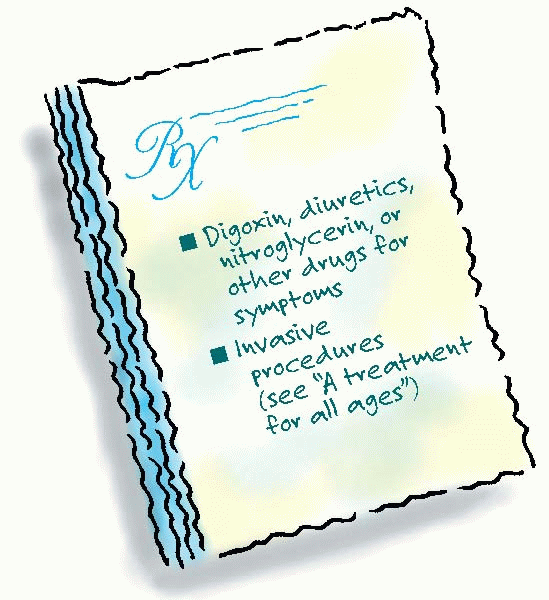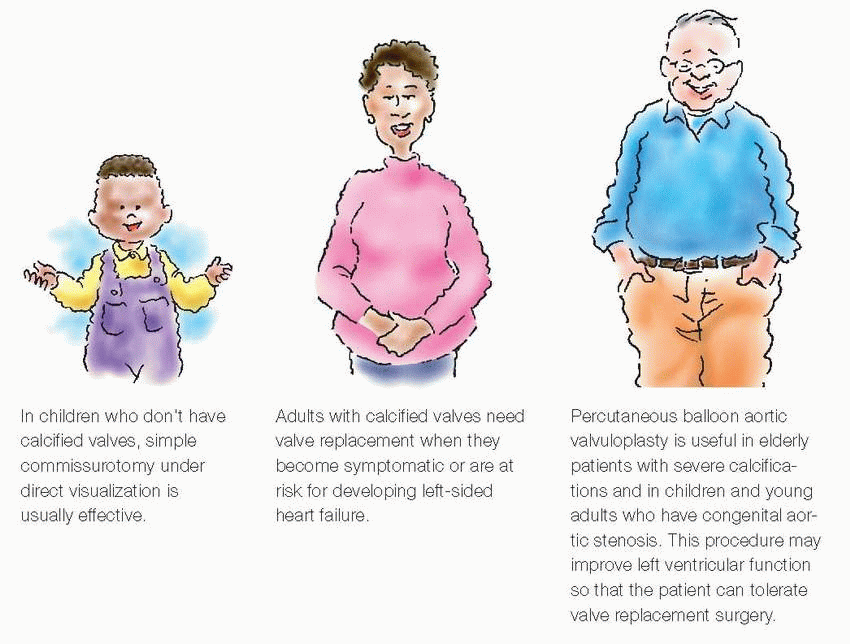Common disorders
Inflammatory dieordere
Inflammatory cardiac disorders include endocarditis, myocarditis, and pericarditis. In patients with these conditions, scar formation and otherwise normal healing processes can cause debilitating structural damage to the heart.
Endocarditis
Endocarditis is an inflammation of the endocardium, the heart valves, or a cardiac prosthesis. It typically results from bacterial invasion and, therefore, may also be referred to as infective endocarditis (IE).
|
Libman-Sacks endocarditis
Found in patients with systemic lupus erythematosus, Libman-Sacks endocarditis is characterized by wartlike vegetations on the leaflets of the mitral valve.
Bacterial endocarditis
In bacterial endocarditis, the leaflets of the mitral valve erode and are eventually destroyed by bacterial invasion.
|
|
|
What’s in a name?
The terminology used to describe IE changes as the causes of the disease become better understood. Some common names include:
acute IE—describes a rapidly progressive disease process
subacute IE—describes a disease process that lasts several months
rheumatic IE—describes disease caused by rheumatic fever-related damage to heart valves.
New names on the IE scene include:
native valve IE—affects original heart valves
prosthetic valve IE—affects artificial heart valves
IVDA IE—affects I.V. drug abusers
nosocomial IE—describes disease that’s associated with hospitalization.
Signs and symptoms of endocarditis
Weakness and fatigue
Anorexia
Arthralgia
Intermittent fever
Loud, regurgitant murmur
Petechiae
Osler nodes
Janeway lesions
Splinter hemorrhages
|
|
Myocarditis
Myocarditis is focal or diffuse inflammation of the cardiac muscle (myocardium). It can be acute or chronic and can occur at any age.
|
Viral myocarditis
Viral infections are the most common cause of myocarditis in the United States.
Signs and symptoms of myocarditis
Dyspnea and fatigue
Palpitations
Fever
Mild, continuous pressure or soreness in the chest
Signs and symptoms of heart failure (with severe disease)
|
Usually
Myocarditis fails to produce specific cardiovascular symptoms or ECG abnormalities. The patient commonly experiences spontaneous recovery without residual defects.
Sometimes
The myocardium becomes damaged. As a result, arrhythmias, left-sided heart enlargement, and scarring can occur, but these problems can usually be readily managed.
Rarely
Myocarditis is complicated by heart failure and leads to cardiomyopathy or arrhythmia-related death.
|
Pericarditis
Pericarditis is an inflammation of the pericardium. Although it’s sometimes idiopathic, common causes of pericarditis include infection, radiation therapy, trauma, renal failure, cancer, and myocardial infarction (MI).
|
Acute
Acute pericarditis can be fibrinous or effusive with purulent, serous, or hemorrhagic exudate. Buildup of fluid can cause pericardial effusion. If the effusion builds too rapidly, cardiac tamponade may occur.
Chronic
Chronic constrictive pericarditis is characterized by dense, fibrous pericardial thickening (shown below). This thickening causes constriction of normal heart size and movement, which can lead to permanently reduced stroke volume and cardiac output.
|
Valvular disorders
Valvular disease, which can occur in any of the heart valves, can be characterized as prolapse, insufficiency, or stenosis. It causes problems with opening and closing of the valves.
|
|
Mitral valve prolapse
Generally a benign disorder, mitral valve prolapse is often called clickmurmur syndrome because of the auscultatory sounds commonly associated with it. Some patients complain of palpitations or chest pain.
|
|
Mitral insufficiency
Mitral insufficiency occurs when the mitral valve doesn’t close completely, allowing blood to flow back through the valve.
1 Blood from the left ventricle flows back into the left atrium during systole, causing the atrium to enlarge to accommodate the backflow.
2 As a result, the left ventricle dilates to accommodate the increased blood volume from the atrium and to compensate for diminished cardiac output.
3 Ventricular hypertrophy and increased back pressure in the left atrium result in increased pulmonary artery pressure, eventually leading to left-sided and right-sided heart failure.
|
|
Acute
Acute mitral insufficiency can start suddenly, with the characteristic sign being severe dyspnea.
|
Mitral valve stenosis
Mitral valve stenosis is hardening of the mitral valve caused by fibrosis or calcification. This hardening results in narrowing of the valve opening, which obstructs blood flow from the left atrium to the left ventricle. Consequently, left atrial volume and pressure increase and the chamber dilates.
|
|
Signs and symptoms
Dyspnea on exertion, paroxysmal nocturnal dyspnea, and orthopnea
Fatigue and weakness
Right-sided heart failure and cardiac arrhythmias
Crackles on auscultation
|
|
Aortic insufficiency
Aortic insufficiency occurs when the aortic semilunar valve doesn’t close completely. In this condition, blood flows back through the valve into the left ventricle. It can result from rheumatic fever, syphilis, hypertension, or endocarditis, or it may be idiopathic. It’s also associated with Marfan syndrome and with ventricular septal defect, even after surgical closure.
|
|
Signs and symptoms
Exertional dyspnea
Cough
Left-sided heart failure
Pulsus bisferiens (rapidly rising and collapsing pulses)
Blowing diastolic murmur or S3
A sign by any other name...
Many common signs seen in aortic insufficiency have been named after the physicians who first documented them. Here are a few for you to spot.
Sign | Description |
de Musset’s sign | Description |
Hill’s sign | Blood pressure that’s higher in the arms than in the legs |
Quincke’s sign | Pulsatile flushing and blanching of the fingernail bed with gentle pressure |
Traube’s sign | Pistol-shot-like sound auscultated over the femoral arteries |
|
Aortic stenosis
Aortic stenosis results from a congenital aortic valve defect, congenital stenosis of valve cusps, or rheumatic fever.
|
|
Signs and symptoms
Exertional dyspnea and paroxysmal nocturnal dyspnea
Syncope
Angina, palpitations, and cardiac arrhythmias
Left-sided heart failure
Systolic murmur at the base of the carotids
|
Degenerative disorders
Degenerative disorders, which cause damage over time, are the most common cardiovascular ailments. The onset of these disorders may be insidious, triggering symptoms only after the disease has progressed.
Hypertension
Hypertension refers to intermittent or sustained elevation in diastolic or systolic blood pressure (BP).
Types of hypertension and their causes
Essential (primary, idiopathic)
Caused by complex abnormalities in the mechanisms that control cardiac output, systemic vascular resistance, and blood volume
More than 90% of all cases
Causes
Environmental factors, such as obesity, stress, and high salt intake
Genetic factors, such as insulin resistance
Increased sympathetic nervous system activity
Secondary
Caused by another disorder
Less than 10% of cases
Causes
Renovascular diseases or primary aldosteronism
Congenital coarctation (narrowing) of the aorta
Hormonal contraceptives
Sleep apnea
Blood pressure classifications
BP is also classified based on the degree of elevation of the readings. This table classifies blood pressure according to systolic blood pressure (SBP) and diastolic blood pressure (DBP).
BP classification | Normal | Prehypertension | Stage 1 | Stage 2 |
SBP (mm Hg) | < 120 | 120 to 139 | 140 to 159 | ≥ 160 |
DBP (mm Hg) | < 80 | 80 to 89 | 90 to 99 | ≥ 100 |
Signs and symptoms
Increased BP measurements on two or more readings taken at two or more visits after an initial screening
Stay updated, free articles. Join our Telegram channel

Full access? Get Clinical Tree




